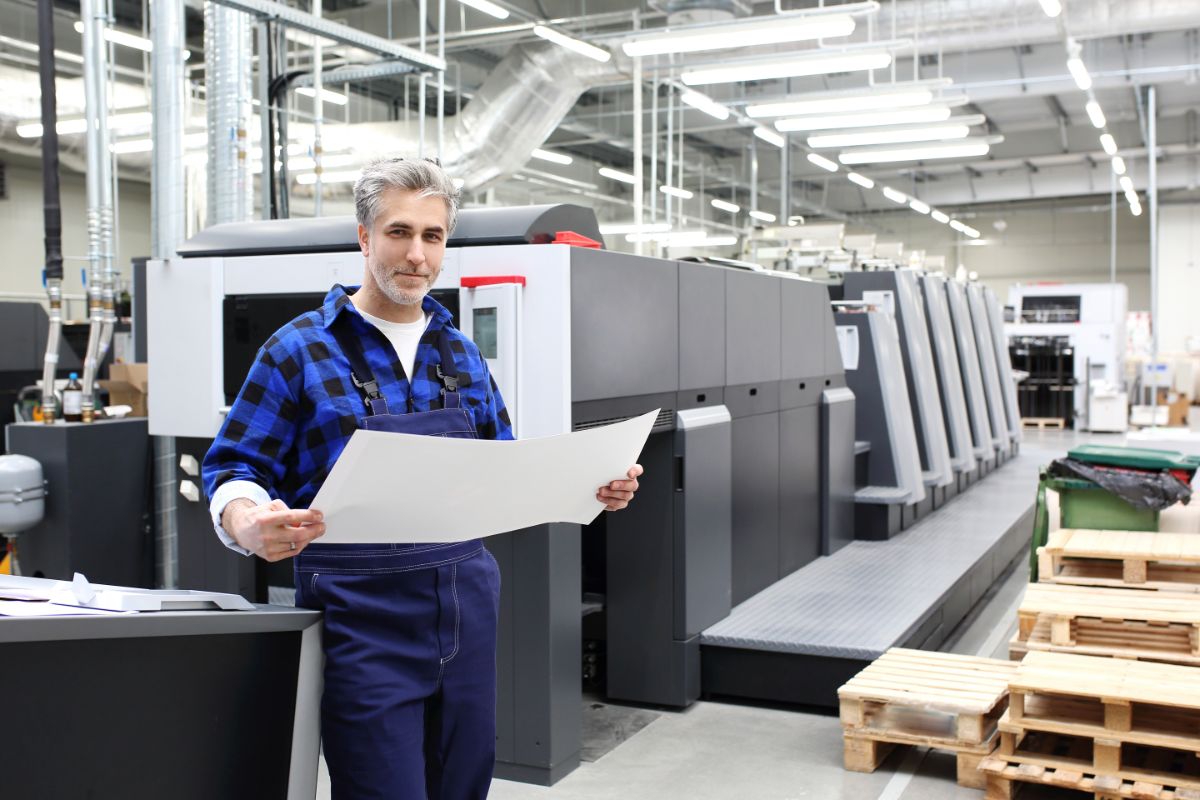In the world of printing, die-cutting holds a significant place, especially when integrated with offset printing. This technique not only enhances the visual appeal of printed materials but also adds functional value. For marketing professionals, understanding the intricacies of die-cutting in offset printing can lead to more creative and effective print designs.
Offset printing, a well-established method, is renowned for its high-quality prints and cost-effectiveness in large volumes. When combined with die-cutting, it opens up a realm of possibilities for creating custom shapes and intricate designs. This article delves into the fascinating world of die-cutting in offset printing, exploring its processes, benefits, and applications.

What is Die-Cutting?
Die-cutting is a manufacturing process that involves cutting shapes out of materials using a die. A die is a specialized tool used to cut or shape material, typically using a press. In the context of printing, it allows for the creation of unique shapes and designs that go beyond the conventional square or rectangular formats.
The Role of Die-Cutting in Offset Printing
When it comes to offset printing, die-cutting plays a pivotal role in enhancing the final product. It allows for the creation of custom shapes and designs, which can be particularly useful for marketing materials such as brochures, business cards, and packaging. By incorporating die-cutting, brands can make their printed materials stand out, leaving a lasting impression on their audience.
Benefits of Die-Cutting in Offset Printing
- Customization: Die-cutting offers unparalleled customization options, allowing for the creation of unique shapes and designs tailored to specific branding needs.
- Enhanced Visual Appeal: The ability to create intricate designs adds a layer of sophistication and professionalism to printed materials.
- Versatility: Die-cutting can be applied to a wide range of materials, including paper, cardboard, and even some plastics.
Die-Cutting Techniques in Offset Printing
There are several die-cutting techniques commonly used in offset printing:
Flatbed Die-Cutting
This technique involves using a flat die to cut shapes into the material. It is best suited for short to medium runs and offers precise cuts.
Rotary Die-Cutting
Rotary die-cutting involves a cylindrical die that rotates to cut shapes. It is ideal for high-volume production as it allows for continuous cutting.
Laser Die-Cutting
Laser die-cutting utilizes a laser to cut shapes into the material. It offers high precision and is suitable for intricate designs.
Applications of Die-Cutting in Offset Printing
The applications of die-cutting in offset printing are vast, making it a versatile tool for various industries:
Marketing Materials
Die-cutting can enhance the appeal of marketing materials such as brochures, business cards, and flyers, making them more engaging and memorable. For more on how offset printing is used in marketing, check out this article.
Packaging
In the packaging industry, die-cutting enables the creation of unique and functional packaging designs that can boost brand recognition.
Labels and Stickers
Die-cutting is essential for creating custom labels and stickers, allowing brands to showcase their logo and information in distinctive shapes.
Challenges in Die-Cutting for Offset Printing
Despite its advantages, die-cutting in offset printing poses certain challenges:
- Cost: The initial setup cost for creating dies can be high, especially for custom designs.
- Complexity: Intricate designs may require more time and expertise to produce accurately.
- Limitations: While versatile, not all materials are suitable for die-cutting, which can limit the design possibilities.
Future of Die-Cutting in Offset Printing
The future of die-cutting in offset printing looks promising, with advancements in technology paving the way for new possibilities. Innovations such as digital die-cutting and improved materials are likely to enhance the capabilities and efficiency of this technique.
Integrating Die-Cutting and Offset Printing
For businesses looking to integrate die-cutting with offset printing, it’s essential to work with experienced professionals who understand the intricacies of both processes. By doing so, they can ensure high-quality results that meet their branding and marketing objectives. To learn more about the integration of these techniques, you might find this resource helpful.
Conclusion
In conclusion, die-cutting in offset printing offers a powerful way to enhance print materials, making them more engaging and effective. As technology continues to evolve, the potential for creativity and innovation in this field is boundless. Marketing professionals and businesses can leverage these techniques to create impactful and memorable printed materials that resonate with their audience.

FAQs
What materials can be used in die-cutting?
Die-cutting can be applied to various materials, including paper, cardboard, and some plastics, depending on the design and application needs.
How does die-cutting improve marketing materials?
Die-cutting enhances the visual appeal and uniqueness of marketing materials, making them more memorable and engaging for the audience.
What are the cost implications of die-cutting?
While the initial setup cost for custom dies can be high, the long-term benefits of enhanced designs and brand recognition often outweigh the costs.
For further reading on offset printing and its applications, you can explore this Vistaprint article that offers additional insights.
This article contains affiliate links. We may earn a commission at no extra cost to you.






